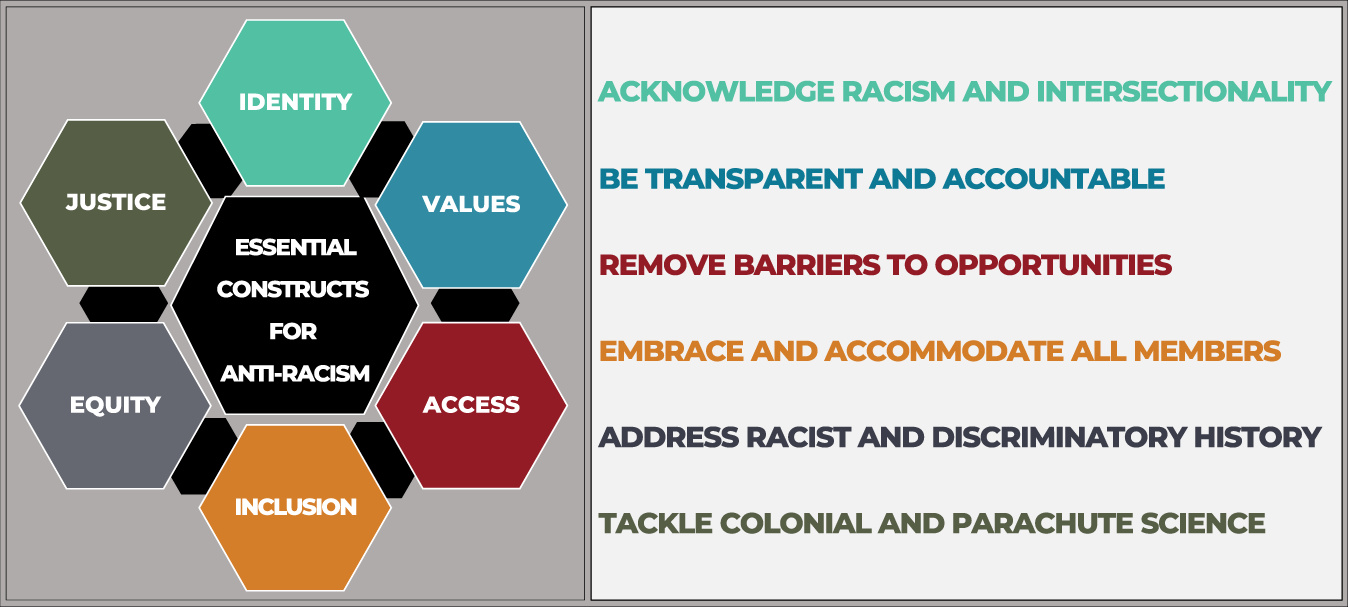Anti-racism refers to the active process of identifying, challenging, and changing the values, structures, policies, and behaviors that perpetuate systemic racism and racial inequity. Unlike simply being “not racist,” anti-racism involves conscious efforts to dismantle racial hierarchies in both institutional and interpersonal contexts, including dating, hiring, healthcare, and education.
Anti-racism
| |
|---|---|
| Category | Equity and Advocacy |
| Related Fields | Sociology, Education, Policy, Psychology |
| Key Constructs | Racial equity, systemic oppression, implicit bias |
| Used In | Education, relationships, workplace training, public health |
Other Names
racial equity work, anti-oppression, equity and justice, racial justice, inclusive practice, bias intervention, racial awareness, critical anti-racism, dismantling whiteness, systemic change
Historical Context
Pre-20th Century: Colonial Racial Hierarchies
Racialized systems of slavery, caste, and colonialism created legal and cultural structures that dehumanized nonwhite populations. The roots of anti-racism began as resistance efforts against these structures, often led by enslaved or Indigenous peoples.
1900s–1960s: Civil Rights and Liberation Movements
Anti-racist organizing took formal shape during liberation movements such as the U.S. Civil Rights Movement, Indian independence, and anti-apartheid resistance. Scholars and activists reframed racism as systemic rather than solely interpersonal.
1970s–1990s: Institutional Critique and Education
Anti-racist pedagogy emerged in education, law, and psychology. Concepts like white privilege, colorblind racism, and intersectionality entered public discourse, challenging dominant narratives of neutrality in institutions.
2000s–Present: Mainstream Visibility and Backlash
Movements like Black Lives Matter globalized the language and urgency of anti-racism. Concurrently, political and media backlash sought to discredit anti-racism as ideological or divisive. Anti-racism remains a flashpoint in education, healthcare, and cultural debates.
Key Debates
Critics of anti-racism question whether equity work reinforces racial categories, while others argue that ignoring race perpetuates harm. Some challenge performative allyship or tokenism within organizations. Debates also examine whether anti-racism can exist within profit-driven or state-run institutions.
Biology
Biology has been misused to justify racism through pseudoscientific claims about race-based intelligence or health disparities. Anti-racist biology recognizes race as a social construct with biological consequences—such as chronic stress from discrimination—but not genetic reality.
Psychology
Psychological research on anti-racism explores implicit bias, in-group/out-group dynamics, and racial trauma. Anti-racist practice includes unlearning internalized prejudice, increasing empathy, and fostering racial literacy in relational and educational settings.
Sociology
Sociologists study how racism is embedded in systems like housing, employment, education, and criminal justice. Anti-racism involves shifting institutional practices, reexamining norms, and amplifying marginalized voices within decision-making structures.
Cultural Impact
Anti-racism influences curriculum reform, media representation, and language norms. It also shapes relationship expectations—particularly in interracial dating—by encouraging open conversations about privilege, safety, and social context. In some regions, anti-racism is criminalized or reframed as extremism.
Media Depictions
Television Series
- When They See Us (2019): Portrays systemic racial injustice in the U.S. criminal system.
- Dear White People (2017–2021): Satirical exploration of race, identity, and institutional hypocrisy.
Films
- 13th (2016): Explores the U.S. prison-industrial complex as an extension of slavery.
- American Son (2019): Examines racial profiling, family dynamics, and grief.
Literature
- How to Be an Antiracist by Ibram X. Kendi
- Me and White Supremacy by Layla F. Saad
Visual Art
Anti-racist visual art often includes street murals, protest posters, and installations rooted in cultural resistance.
- Murals memorializing George Floyd and Breonna Taylor.
- Art collectives like For Freedoms integrating anti-racism into public installations.
Research Landscape
Anti-racism is studied in education, public health, social psychology, critical race theory, and organizational leadership. Recent work addresses how institutions can implement sustainable anti-racist policy rather than symbolic gestures.
- Development and Preliminary Validation of a Self-Report Measure of Sensory and Moral Disgust Toward Perceived Unhealthy FoodPublished: 2025-05-05 Author(s): Niyati Mistry
- Preclinical Experiential Global Health Leads to Transformative Learning and Long‑term ImpactPublished: 2025-05-05 Author(s): Marissa Vander Missen
- Illness and treatment beliefs and health outcomes in chronic pain: a meta-analysisPublished: 2025-05-05 Author(s): Martin S Hagger
- Point-counterpoint: What is the best strategy for developing generative AI for hospital medicine?Published: 2025-05-05 Author(s): Hannah Kerman
- The Creation of an Interprofessional Education (IPE) Strategy Utilising a Delphi MethodPublished: 2025-05-05 Author(s): Nebras Alghanaim
FAQs
Is anti-racism the same as being “not racist”?
No. Anti-racism involves actively identifying and challenging racism. Being “not racist” is a passive stance, while anti-racism requires ongoing reflection and action.
Can anti-racism be taught?
Yes. Through education, media, and personal reflection, people can unlearn biases and develop racial literacy. However, it requires long-term commitment and humility.
Is anti-racism only about Black and white people?
No. While much discourse centers on anti-Black racism, anti-racism applies to all racial hierarchies, including Indigenous erasure, Islamophobia, anti-Asian racism, and more.
Does anti-racism apply in dating?
Yes. Anti-racist dating includes interrogating racial preferences, discussing social context, and challenging stereotypes or exotification in romantic attraction.
Is anti-racism political?
It can be seen as political, but it is also ethical and relational. Anti-racism seeks to reduce harm and build equitable systems—within and beyond governments.





